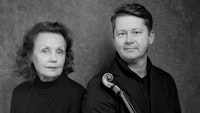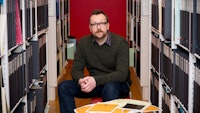Field of study: Artistic Research (Percussion)
Jennifer Torrence: Percussion Theatre: a Body in Between

How far instrumental/percussion theatre and its performers can move away from classical music's concert tradition and towards other performance media while still maintaining the integrity and sensibility of a classically trained musician?
Summary
The contemporary percussive art is innately and increasingly theatrical, but can we go so far as to call it “experimental theatre”? Though firmly placed in the context of the concert hall, instrumental theatre is classical music’s response to experimental theatre traditions extending across the 20th and 21st centuries. Instrumental theatre embodies an in-between-space where the work is not quite music, not quite theatre, and not quite dance. This research will explore how far instrumental/percussion theatre and its performers can move away from classical music’s concert tradition and towards other performance media while still maintaining the integrity and sensibility of a classically trained musician.
The artistic research includes developing four evening-length solo productions with composers from Norway, France, Russia and the United States of America. By creating long-form productions instead of short solo pieces, the composers and performer are able to move beyond the classical concert format and to shift into the frame of dance and theatre productions. The new works will utilize percussive arts as well as theatrical and movement-based performance techniques, forcing the performer to actively engage in the development and performance of extra-musical skills. In addition, each work will prioritize staging, lighting, costume, and diversity of venue.
The roots of instrumental theatre stem from the work of Mauricio Kagel and his contemporaries John Cage, George Aperghis, and Vinko Globokar. Today, the tradition continues through voices such as Trond Reinholdtsen, Francois Sarhan, Johannes Kreidler, Carola Bauckholt, and Manos Tsangaris. As the compositional roots grow deeper, so do the demands on the musician. It is up to the performer to develop her theatrical “instrument”, to rigorously investigate her singing and speaking voice, her movement, her awareness of the stage, and to develop new work that reflects this specialization.
The instrumental theatre holds a permanent place in the percussive art and currently boasts dozens of works firmly set in the percussion canon. The majority of solo percussion theatre works hold a duration ranging from seven to fifteen minutes. The creation of a body of full-length solo instrumental theatre productions could revolutionize the way the instrumental theatre artist approaches commissioning, the development process, and their artistic practice in terms of trans-disciplinary training and exploration.
Research and scholarly writing on percussion theatre has historically focused on works from the percussion literature rather than the creation of new work, and often feature analysis, explanation of notation, and historical context. My research poses a new question: how can the focused development of long-form works which actively demand extra-musical skills affect the instrumental theatre performance practice, and new instrumental theatre works? Ultimately, the goal is to move instrumental theatre beyond classical music’s concert tradition and to uncover the potentials of a trans-disciplinary practice.
Documentation
The full title is Percussion Theatre: a Body in Between.
Articles relevant
Published: Oct 18, 2016 — Last updated: Apr 2, 2025



